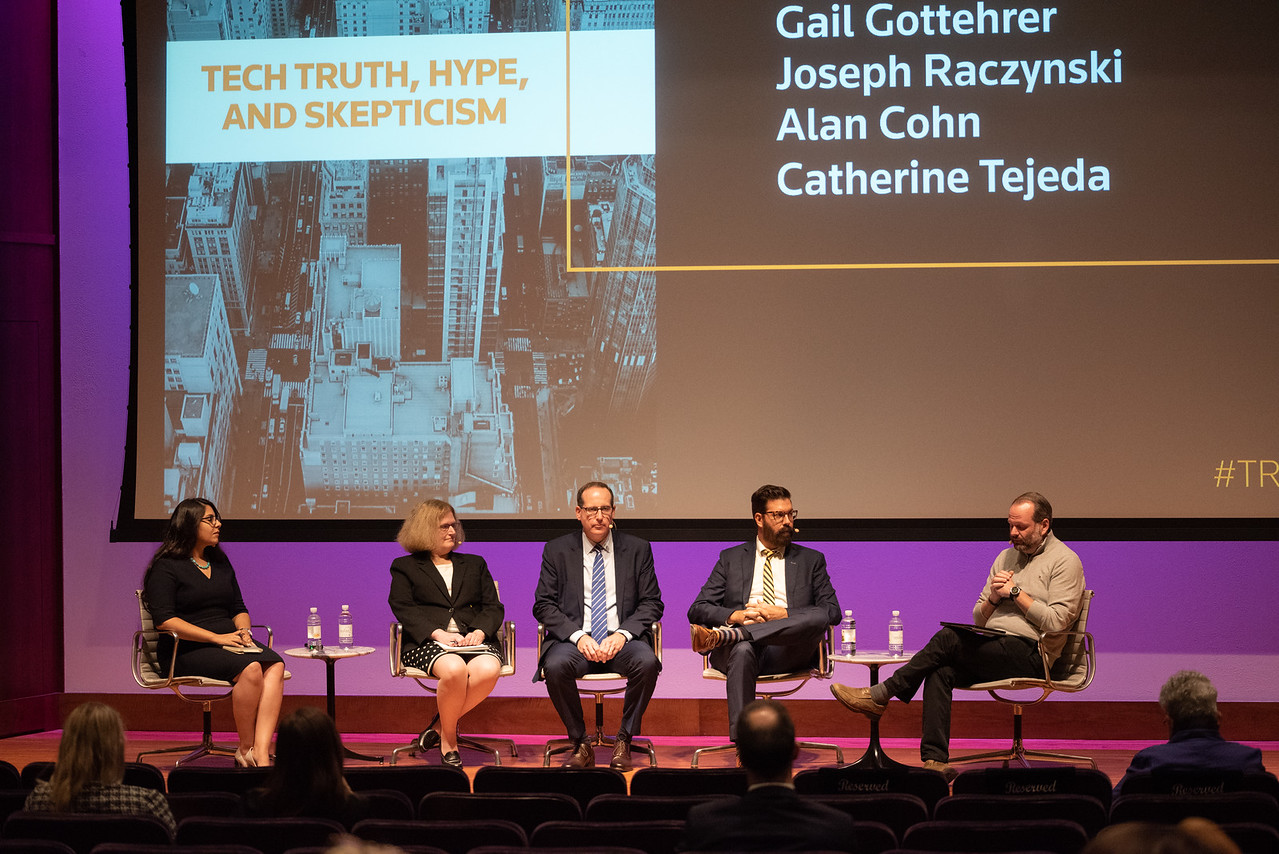At Thomson Reuters Government Day, a panel tried to see through the hype of blockchain, working to uncover the value of this innovative technology for government use.
WASHINGTON, D.C. — The Government sector strives to ramp up its efforts to more widely integrate cutting edge technologies like blockchain, artificial intelligence, and the Internet of Things (IoT), it is running into a myriad of challenges.
Not the least among them, is separating the reality from the hype of these miracle tech solutions.
At Thomson Reuters 4th Annual Government Day, one panel attempted this separation by focusing on blockchain, working to uncover the reality of this technology today for governments and cut out the hype.
Government supply chain management
One area the panel focused on with blockchain is the tech’s potential to change supply chain management, offering a scenario in which a state or federal agency needs to identify the ground zero genesis of a fruit or vegetable foodborne illnesses. The newest proof of concepts utilizes a blockchain-enabled IoT supply chain management technology ecosystem that can save lives by greatly reducing the time it takes to track contaminated tomato from the salad bar back though delivery, distributers, wholesalers, to pickers and finally to the farm.
The panel also discussed how a Massachusetts-based farmer could partner with a technologist to track his tomatoes from vine to fork. The farmer uses IoT temperature gages from the pickers to the platers. This is an example of a public and private partnership where produce with clear data on temperature, handlers, and distributers can be audited through the entire supply chain, all supported on a distributed ledger.
Harnessing this collection of technologies, any listeria outbreak can reduce seven days of research to just seven minutes, ensuring that the U.S. Food and Drug Administration (FDA) have rapid response and control.
Sovereign identity
Another area the panel discussed included identity management solutions. Breeches to our own private information are commonplace. In fact, recently Facebook suffered yet another attack where 200 million users’ phone numbers were found in a publicly facing open database, including the number of Facebook CEO Mark Zuckerberg. (In case you are wondering, calling Mr. Zuckerberg’s phone number goes to a generic voicemail.)
Not surprisingly given the stakes, various federal agencies have been surveilling this space for some time. An emerging concept about how to prevent such breaches and other identity security mishaps in the future is taking form.

The panel also took up the “radical” idea that the U.S. Department of Homeland Security (DHS) could issue a new unique identifier to replace a citizen’s Social Security Number (SSN). In a major shift, this identifier would exist on a blockchain. This decentralize system would place the control of the identifying number into the hands of the individual, removing a central repository, which could be hacked.
Panelist Alan Cohn, a partner at Steptoe & Johnson, pointed out how this could more securely enable our current voting system, curtailing the chance of fraud and make voting easier for all.
Digital assets
Finally, the panel explored the shifting landscape of digital assets. Cohn said he expects a huge swing in the way we look at assets from a personal perspective and in how the government views it.
The panel concluded that with Facebook launching its own cryptocurrency, Libra, this process has been legitimized. The discussion amped up around what will happen next. I suggested to the panel that Libra could be dead in the water in the United States because of a heightened regulatory concern, but this blockchain-enabled asset cannot be placed back into the bottle. Indeed, with years of consternation ahead from regulators on Libra, companies around the globe will move forward, and the next organization to create what amounts to a world currency will be a messenger app which has 500 million users, Telegram. (Expect its launch before Halloween 2019.)
In all likelihood, governments around the world will be spooked by the immense power an app founded in 2013 will create. They will have a scalable, frictionless asset with features that could bypass anti-money laundering (AML) rules and Know Your Customer (KYC) regulations.
Panel moderator Jason Thomas, Manager of Innovation at Thomson Reuters, and panelist Gail Gottehrer, of the Law Office of Gail Gottehrer, noted that there is significant promise ahead with the intermixing of multiple technologies in combination with blockchain. Indeed, governments are beginning to adopt and adapt in this environment; and with a push from the private sector, state and federal agencies will continue to adjust.
The synthesis of technologies like IoT, AI, and blockchain will create processes which should stamp out farm- and distribution-based foodborne illnesses. New initiatives around the security of personally identifiable information through blockchain will place the control of information into an individual’s hands, removing central points of failure and reducing costly and damaging data breaches.
Lastly, one of the most significant changes ahead is the look and feel of our ownership of assets when everything becomes digital. The opportunity is immense, but so are the concerns around our government’s ability to counter AML as assets become increasingly liquid and frictionless across the globe.







